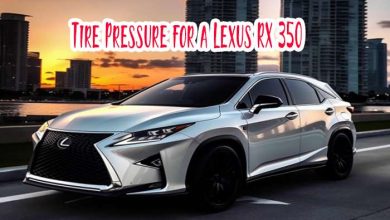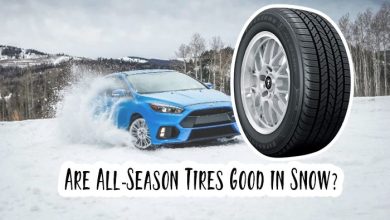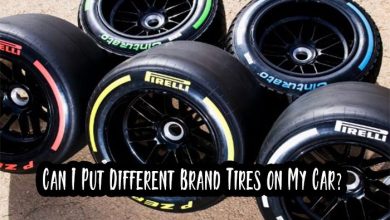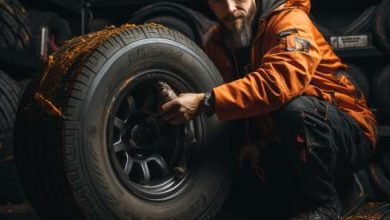It’s Not Save To Drive On Low Tire Pressure | Here Is Why
Picture this: you’re about to hit the road, and suddenly, you wonder, “Can I drive on low tire pressure?”
As a tire expert with an intimate knowledge of how these rubber companions interact with the road, let’s delve into the intricate world of tire dynamics and find out what happens when the pressure takes a dip.
It is strongly not recommended to drive on low tire pressure. Doing so can be dangerous and lead to several problems,
Ideal Tire Pressure: What’s Recommended?
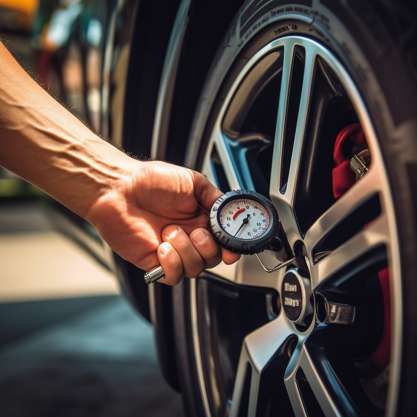
Before we explore the realm of low tire pressure, let’s understand the baseline. Ideal tire pressure is like the Goldilocks zone for your wheels – not too high or soft, but just right.
Check your vehicle’s manual or the sticker inside the driver’s door frame for the manufacturer’s recommended pressure. It’s the spot for optimal performance, fuel efficiency, and tire longevity.
Read my recent post- Can R And R Tires Send You To Jail?
Can You Drive on Low Tire Pressure?
Can You Drive on Low Tire Pressure? No, it is not safe to drive on low tire pressure. Driving on low tire pressure is dangerous and can lead to several problems, including:
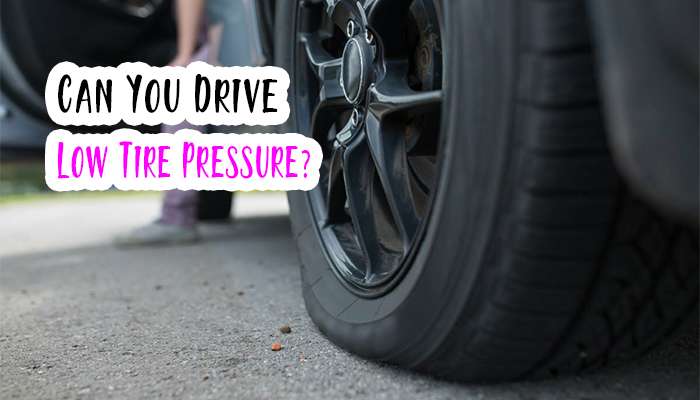
- Tire blowouts: Low tire pressure can cause the tires to overheat, leading to a blowout. A blowout can cause you to lose control of your vehicle and can result in a severe accident.
- Reduced fuel efficiency: Low tire pressure can cause your car to work harder, reducing fuel efficiency.
- Premature tire wear: Low tire pressure can cause the tires to wear unevenly, shortening their lifespan.
- Poor handling: Low tire pressure can make your car handle poorly, making it more difficult to control.
- Increased risk of hydroplaning: Low tire pressure can increase the risk of hydroplaning, which is when your tires lose contact with the road surface and you skid.
If you suspect your tires are low, check them immediately. You can check the tire pressure using a tire pressure gauge.
The recommended tire pressure for your car can be found on a sticker inside the driver’s door jamb.
If your tires are low, inflate them to the recommended pressure. You can do this at a gas station or home with a portable air compressor.
Also Read: How Temperature Can Affect Your Tire Pressure?
You must also check your tires regularly for signs of wear and damage. If you see any signs of wear or injury, you should have your tires inspected by a qualified mechanic.
Here are some additional tips for driving with low tire pressure:
- Avoid driving at high speeds.
- Make sure you are aware of your surroundings and are going defensively.
- If you experience a tire blowout, pull over to the side of the road as soon as possible and turn on your hazard lights.
- Do not try to drive on a flat tire. Call a tow truck to have your car towed to a safe location.
Detecting Low Tire Pressure
So, how are your tires deflated? Keep an eye out for these telltale signs:
- Visual Inspection: A glance might reveal a visibly sagging tire.
- TPMS Warning Light: Modern vehicles come equipped with Tire Pressure Monitoring Systems. If that light on your dashboard starts winking at you, it’s time to check the pressure.
- Handling Changes: Low tire pressure might be the culprit if your car suddenly feels sluggish or drifts to one side.
The Risks of Low Tire Pressure
Driving with insufficient pressure isn’t a harmless quirk; it’s a recipe for trouble. Here are the risks:
- Reduced Fuel Efficiency: Underinflated tires increase rolling resistance, burning more fuel and denting your wallet.
- Tire Wear: Uneven tire wear is the nemesis of longevity. Low-pressure concentrates wear on specific areas, hastening the need for replacements.
- Blowouts: When a tire is underinflated for an extended period, it increases the likelihood of a dramatic consequence: blowouts.
Driving on Low Tire Pressure: What Happens?
Now, let’s get into the nitty-gritty of what unfolds when you roll on underinflated tires:
- Increased Heat: Low pressure increases friction, generating heat that can result in tire failure.
- Poor Handling: Your vehicle becomes less responsive, impairing your ability to steer effectively.
- Braking Challenges: Stopping distances increases, compromising your safety and that of others on the road.
How long can you drive on low tire pressure?
Unfortunately, no one-size-fits-all answer to how long you can drive on low tire pressure. It depends on several factors, and driving for extended periods with low pressure is highly discouraged and dangerous.
Here are some key points to consider:
The severity of underinflation:
- Slightly low: A few PSI below recommended might be okay for a short distance (5-10 miles) at moderate speeds (30-40 mph).
- Moderately low (10-15 PSI below): Drive slowly (20-30 mph) only for the absolute minimum distance to reach a safe location to address the issue.
- Very low (below 20 PSI): Never drive on tires this low. It significantly increases the risk of blowouts, accidents, and damage to your car.
Road conditions:
- Highways and bumpy roads: Avoid driving on them with low pressure.
- Dry, paved roads offer slightly more leeway, but still, drive with extreme caution and only for the shortest possible distance.
Additional factors:
- Type of car: Some cars are more susceptible to tire problems than others.
- Weather conditions: Hot weather can exacerbate tire pressure issues.
- Driving speed: Higher speeds increase the risk of blowouts.
Tire Maintenance for Optimal Performance
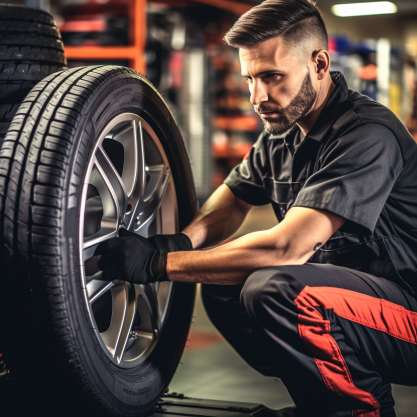
Regular maintenance paves the road to preventing low tire pressure issues. Here’s a quick guide to keeping your tires in top-notch shape:
- Regular Pressure Checks: Make it a habit to check your tire pressure at least once a month.
- Visual Inspections: Look for cuts, bulges, or anything unusual.
- Rotation: Regularly rotate your tires to ensure even wear across all four.
Conclusion
Tire pressure is the unsung choreographer in the grand dance between your vehicle and the road. Embrace the art of maintaining optimal pressure for a smoother, safer ride.
If you’ve got any tire tales or tricks up your sleeve, share them with fellow road warriors. After all, the road is better when we navigate it together.
Reference Link
For a comprehensive guide on tire care and maintenance, explore The Tire Safety Guide.
Glossary
- TPMS: Tire Pressure Monitoring System is an electronic system designed to monitor the air pressure inside your tires.
